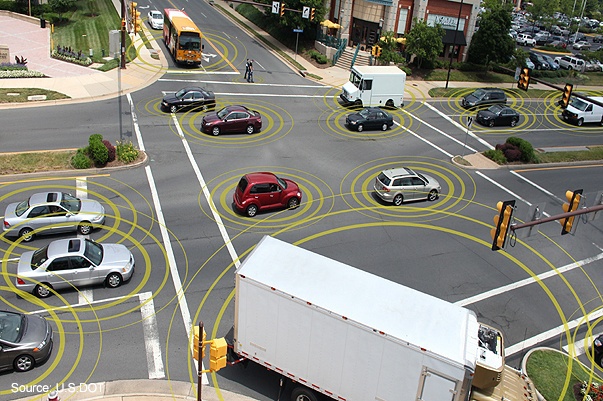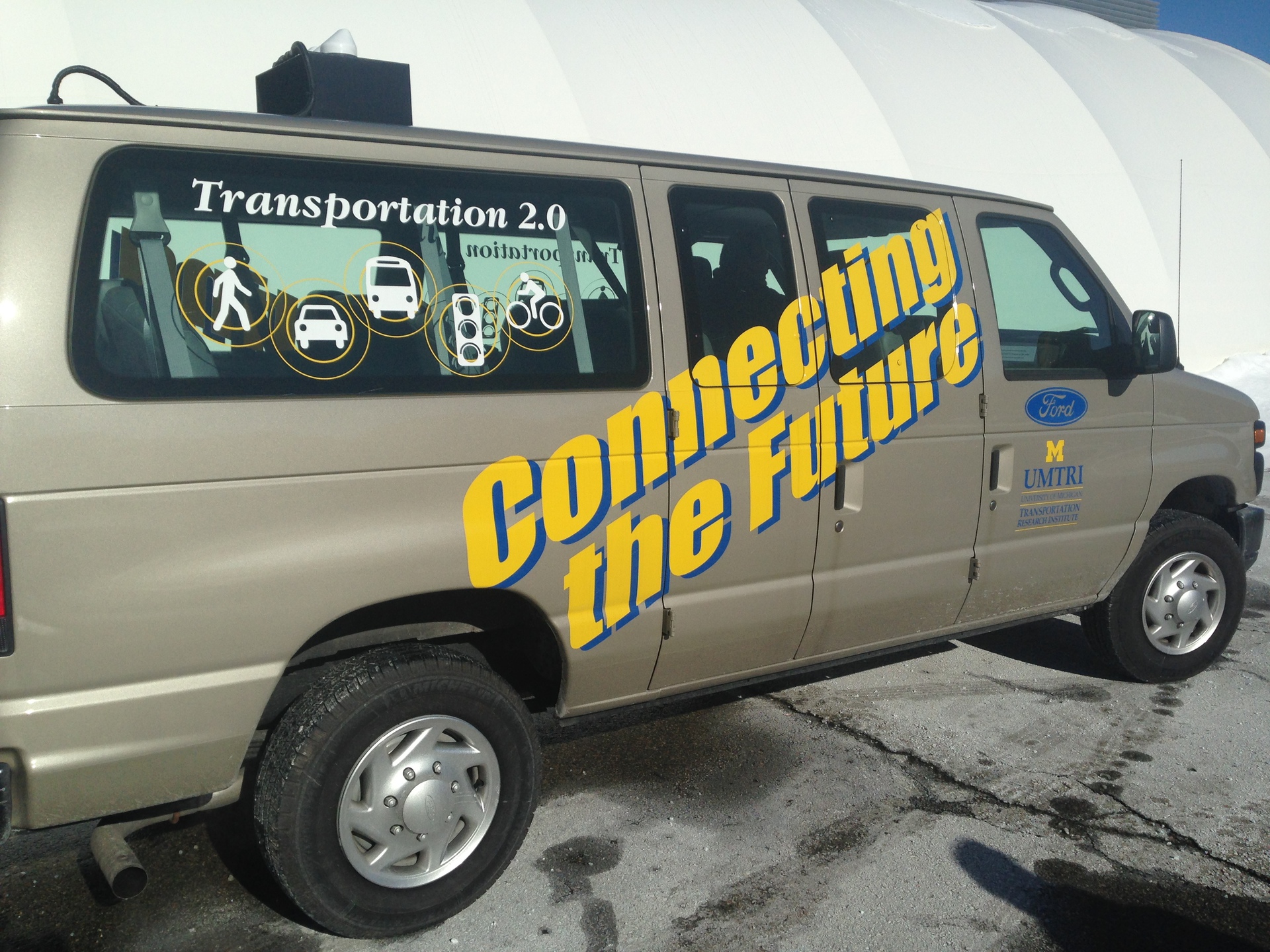A world without accidents
- Transfer

Ann Arbor, Michigan.
“Here the road bends. You probably would not have paid attention to it, but two years ago a man was shot down here and you couldn’t find the offender, ”says Debra Bezzina. Our van, driven by Rick Bird, Debra’s colleague at the University of Michigan, comes into this bend of the road, which looks safe, despite the January frost. But Bezzina told how one man, driving here at high speed, rolled off the road. And he was not the first.
I prepared for the turn. Then something unusual happened: an alarm sounded from the dashboard, a light signal blinked in the corner of the rear view mirror. Also, on the special display, a right turn sign was shown on a blue background, which turned red, warning of danger. Bird slows down.
What just happened was both simple and deep in meaning. This is something that Bezzina and Byrd, University of Michigan Transportation Research University (UMTRI) said, could change the way American drivers are used to getting to their destination. The van in which we drive (the UMTRI wagon with a flashy yellow sticker “Connecting the Future”) is equipped with driver alert technology in various situations. In our case, the equipment at the curb transmits the recommended speed to overcome the turn to such cars as ours. The device in the car caught a signal, assessed the risks and warned us of the danger.
The UMTRI van is not the only car here that has such futuristic equipment. I ended up in Ann Arbor in the last weeks of an 18-month extensive trial of inter-car communication technology. The test was funded mainly by the US Department of Transportation, which wants to find out what kind of security benefits such devices can provide. A total of 2,800 cars in Ann Arbor participate in a program called the Safety Pilot. All of them are equipped with devices for transmitting indicators of their speed and position to the same machines. And 400 of them also carry on board the system that I observed in the UMTRI van plus cameras to track the driver’s response to system warnings. Cars, trucks, tractor trailers, and even a bicycle are connected to the system.

“This is the largest deployment of such technology in the world at the moment,” says Scott Belcher, head of the Intelligent Transport Society of America, a trade association of which UMTRI is a part.
Cornering alerts are not the only type of alerts that drivers in Ann Arbor experienced - they were a whole set along with the connection between the pairs of cars and the transmitters along the roads. In various difficult situations, such as difficult left turns, approaching trains at level crossings, maneuvering in the “blind zones”, sudden stops in front of going cars. With the technology used in the UMTRI van, all this made driving in such situations much safer.
Many today have heard about research in the development of autonomous cars that drive on their own, guided by sensors. The automobile revolution, they say here in Michigan, which we will see soon, will come not from cars that “feel,” but from cars that “speak.” Experts announce the arrival of the “Internet of cars” - and according to some opinions, these will be the biggest changes in our usual trips since the invention of cars.
The first and most important thing that will give is driving safety. The National Highway Traffic Safety Administration has already calculated that vehicle-to-vehicle vehicle communications technologies like those experienced in Ann Arbor will help reduce so-called sober driver errors by 80 percent. “That's even more than seat belts and airbags can give,” Belcher says. “In principle, it will be cars that do not fall into an accident.”
While data from Ann Arbor is still being processed, the US National Highway Traffic Safety Administration (NHTSA) recently announced that the use of such technology in new cars will be mandatory. Signals were given to automakers that automobile communication technology is a new phase in improving the safety of vehicles (some automakers can now offer low-cost devices for upgrading already manufactured cars). The concern is also considered that it is impossible to talk about complete safety until absolutely all cars on the roads are equipped with such technologies.
Having spent enough time interviewing automotive futurists, you will realize that such innovations can only be the beginning. Therefore, as soon as you create a world where cars, roads, traffic lights and transport services exchange information in real time, everything will develop even more dynamically and creatively, as it once was with the advent of the Internet.
Belcher and others talk about small experiments that are aimed at resolving transport problems throughout the country. In downtown Manhattan, users of the EZ Pass system collect traffic data and adjust the time of traffic lights, thereby reducing traffic jams. San Francisco uses sensors to change the pricing of parking spots. Experts talk about improving these technologies in the future and developing new ones so that each car can share information about its location and speed.
Some futurists talk about the advent of a real transport utopia. In the new realities, it will be possible to avoid any accidents altogether. The design of the car, and its fuel consumption, business models will be rethought. It will be possible to rent cars that will drive you like automatic taxis.
“If you have a communication platform that is reliable and secure, you can use it whenever you want, limited by your imagination,” says Belcher.
Of course, at the moment there are still countless questions that Ann Arbor solves: how well is this technology worked out? Some experts are wondering if manufacturers should be forced to use the technologies used in Ann Arbor - short-range communications, such as WiFi, but as modern networks, such as 4G LTE, which are widely used.
You also need to remove concerns about the confidentiality of data. Traffic safety apologists should completely solve these problems and explain to other drivers their conclusion. Researchers say that these aspects will be more difficult to overcome than technological factors.
Some more details about the experiment here .
